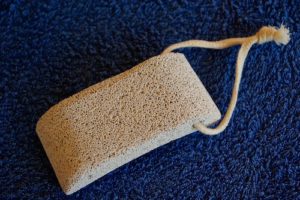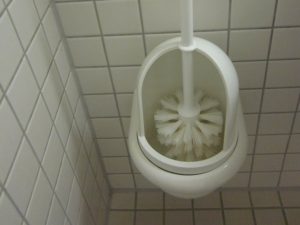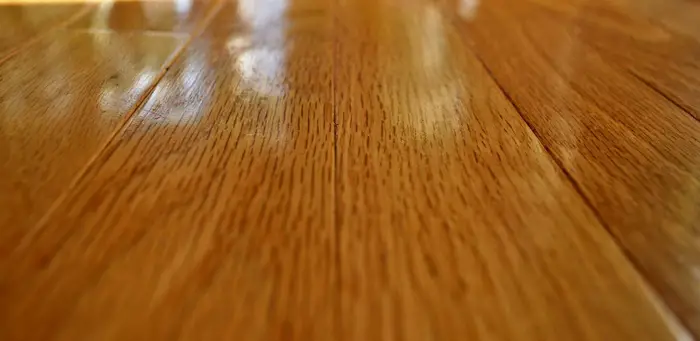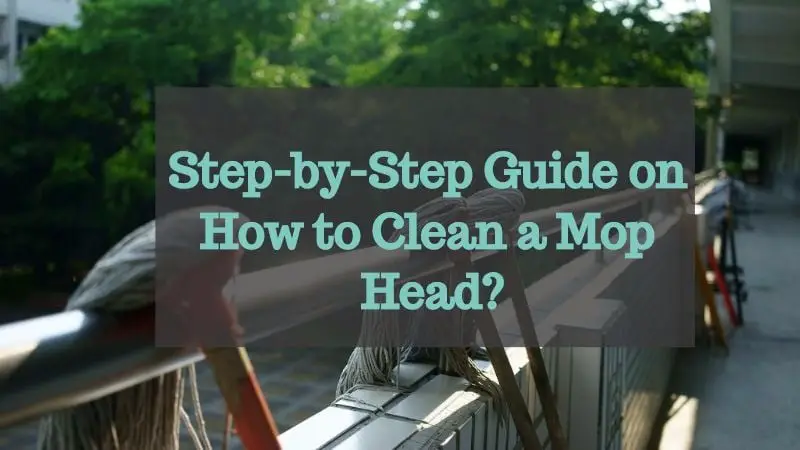Toilet cleaning is one of the chores that most people never take seriously. Most people do not even know what products to use on their toilet or even how to remove stains from the toilet bowls. So, how do you clean toilet bowls stains? There are many ways to get rid of stubborn toilet bowl stains. Read on to get more insight into the different methods.
Many people may be bewildered by the kind of stains that manifest in the toilets. You may clean the toilet regularly, yet you still find rings around and at the bottom of the bowl. If you notice this, then this definitely shows that you are not doing it the right way. This article gives insight into the types of toilet bowl stains, and ways to get rid of them using different products and methods.
What Are The Different Types Of Toilet Bowl Stains?
Before you get down to removing any toilet bowl stain, it is essential to know what kind of stain you are dealing with. This will help you choose the right and the most effective stain removal method. At a glance, the different types of toilet bowl stains include the following:
- Toilet bowl rings
- Hard water stains
- Limescale
- Mineral deposits
- Discoloration from cleaners
- Mold and mildew
Dealing with Toilet Bowl Rings
There are three varieties of toilet basin rings. The first one is a red or brown-colored ring. It originates from magnesium and calcium mineral deposits. If after scrubbing you still can’t get rid of it, then it is a hard water stain. The second one is a green or black ring that develops in the area where the water sets in the toilet. It is mostly as a result of mold. The last ring is pink in color. It usually comes up as a result of bacteria buildup.
- The Toilet Bowl Red-Rust Stain
Most of the time, the red, brown, and rust rings are the hardest to clean because cleaners such as bleach make these rings permanent. In any case, the rust ring etches deep into the porcelain, making it difficult to come out. However, with the help of hydrochloric acid, you can easily get rid of the stain.
- The Green or Black Toilet Bowl Ring
The second type of ring that you may spot in your toilet bowl is green or black mold stain. This ring develops because of what we are flushing down the toilet, which is basically coming from our bodies. We tend to assume that everything has flushed away because of the clean remnant water but truth is, the murky water flows through the pipes. A simple scrubbing and flushing will get rid of the ring. However, this kind of ring keeps recurring due to the nature of the toilets. As we flush, we bring back in more water to flush, thus the ring does not go away.
- The Pink Ring
The pink bacteria ring is the third type of toilet bowl ring/stain. It is also called the bathroom ring or mold although it is not a mold exactly. It is a bacterium, which manifests inside sinks, showers, and toilet bowls. It is a mixture of air contaminants, which settle with body excrements and water. When you flush, urine, feces, sweat, dead skin cells, and soap al combine to form the pink bacteria.
How Do You Get Rid Of The Toilet Rings?
Here are agents to help you get rid of the toilet bowl rings:
-
Hydrochloric Acid
Now you need to know that hydrochloric acid is caustic, thus, ensure you are protected. Wear gloves and avoid direct skin contact as it can burn your skin. In addition, wear some facemask so that you do not inhale the fumes. Since it is not good for pets and children, ensure that you use only when no one is around to be on the safe side. Despite its toxic nature, it will still remove the stain.
-
Denture tablets
Another quite effective of getting rid of the rust ring is using denture tablets(see Amazon). Put a few of these tablets inside the toilet bowl, close it, and let it stay overnight. The disintegrated tablets will eat up the rust, and get rid of the red ring.

Some people may want to use pumice stone as a non-toxic means of stain removal. You need to know that pumice is a stone made of hot lava mixed with some water and then hardened. As you rub this rock against the toilet bowl, it will be scratching and eating away the porcelain. The stains will come out but so will your toilet’s porcelain finish.
Some people are also stuck to the myth that coke can remove such stains. They end up wasting several cans of coke. That is not the purpose of Coca-Cola, and it will not do a great job. Avoid such household urban myths and use hydrochloric acid for the best results.
How Do You Deal With Hard Water Stains in the Toilet Bowl?
Hard water is water that contains a considerable amount of dissolved minerals like magnesium and calcium. The hard water is known to cause the ugly rings around the toilet bowl. You definitely do not want this kind of stains in your toilet for hygienic and aesthetic purposes. If that is the case, let us get down fixing the problem.
It is possible to remove hard water stains from your toilet bowl using the right products or cleaners (see my reviews). Products such as certain toilet bowl cleaners and the kind of tabs that turn the water blue are known not to work. Bleach and any cleanser containing bleach usually worsen the situation. In fact, depending on your water’s mineral content they may do nothing at all. The chemical reaction may darken the stain and completely impenetrable. Other soapy detergent-based simply roll off the stains, dissolving them in water, doing completely nothing. Even some abrasive powders can be a total disappointment if not backed with hard and long scrubbing, which ends up damaging the surface of the toilet bowl.
Thankfully, there are products that do well. They are known as hard water removing cleansers.
Here is how to remove hard water stains from your bowl effectively.
-
Using Baking Soda and Vinegar
Vinegar and baking soda clean many household items, and in this case including removing hard water stains from the toilet bowl.
Step 1– pour a cup of vinegar into the toilet bowl, stir with a brush, and leave it for one minute.
Step 2– add some baking soda and a little more vinegar to create a fizzing action. Leave it for around ten minutes.
Step 3– using a brush, spread the solution around the bowl, ensuring all stains are covered. Do not flush yet.
Step 4– after around 30 minutes and swishing at least once or twice, scrub the bowl using a brush. You can now flush to rinse.
-
Using Borax and Vinegar
Borax is a multi-purpose cleaning product that can clear hard water stains from the toilet bowl as well as other plumbing fixtures.
Step 1– pour a ¼ cup of Borax into the bowl and spread it all over the bowl using a brush.
Step 2– add a cup of vinegar and let the mixture rest there for at least 20 minutes.
Step 3– scrub it and flush to rinse.
-
Using Borax Paste
Borax paste is particularly useful in the removal of stubborn hard water stains.
Step 1– shut off the water entering the toilet and drain the bowl by flushing. This is to ensure that no stain is covered by water.
Step 2-make a thick paste by mixing borax and vinegar.
Step 3– immediately apply the paste on the stains and ensure they are completely covered.
Step 4– let the paste stay there for at least 20 minutes before scrubbing it off with a brush and flushing the toilet.
The above products when used regularly prevent hard water stain buildup and hence keeping your toilet bowl free of stains.
How Do You Remove Black Spots in a Toilet Bowl?
Black spots may appear in the toilet bowl due to either mineral deposits or mold growth. If you do not often use the toilet or if the black spots are above the waterline, then you know its mold. If the spots are below the waterline and if you use hard water, then you know the black spots are a buildup of manganese. When you are not sure whether it is mold or manganese, start by treating it as a mold first.
For mold spots:

- First, flush the toilet to get it damp on the sides and then sprinkle the borax powder on the black spots.
- Spray some vinegar on the same spots and let the vinegar and borax stay there for a few hours.
- You can then use a toilet brush to clear it off and rinse it by flushing.
For manganese spots:
- Start by turning off the toilet water.
- Flush the toilet and remove the remaining water as much as possible until you can access the black spots. You can scoop out the water using a cup if necessary.
- Mix some tartar cream and hydrogen peroxide to form a thick paste. Use a toothbrush to coat the black spots with the paste. Allow it to rest for around 20 minutes.
- You can then use some water to rinse off the paste.
- After the process, if there are some black spots remaining, repeat the process, allowing the paste to rest for longer for more efficiency.
How Do You Get Rid Of Mildew Stains from Your Toilet Bowl
Mildew is linked to respiratory problems and other health issues. In addition, it is aesthetically unpleasant, the more reason why you should remove it from the toilet bowl. You would need some white vinegar and bleach or tree oil to get rid of it.

- Fill a spray bottle with a solution of your liking. It could be vinegar water, bleach water mixed with tree oil.
- Flush the toilet and drain as much water from it as possible before starting the cleaning process.
- Spray the solution on the toilet bowl.
- Use a toilet brush like this to scrub the mildew from the toilet bowl. You can do this repeatedly until all the mildew is gone.
Related Article: How Do You Clean Toilet Brush After Use?
Are There Any Initial Steps To Take Before Washing Away The Stains?
Of course, there are certain things you have to do and keep in mind before you deal with the stains on your toilet bowl. First, you need to check the manufacturer’s instructions of the kind of toilet bowl you have. This will ensure that you do not use cleaning products that might damage your toilet.
Secondly, ensure to remove almost all the water from the bowl to make it easy to access all stains present. Before you start dealing with any tough stains, do some general cleaning of the toilet. Use some form of cleanser and a brush to scrub the toilet bowl thoroughly and flush it. This will leave any present stain clearly visible, and you can easily work on it.
Finally, if possible, determine the cause of your stains. This will come in handy in choosing the right type of cleaner to use. Once you know, then you can now proceed to the process of stain removal.
What about the Unused Toilets?
If there are some toilets in the house that you do not use, it does not mean that they are very free of stains. Ensure that you go in and flush them at least once per day. To add to that, give them a thorough cleaning using the toilet cleaners at least once every week. Remember that even though you are not using the toilet, the sewage is still there in the pipes land the water can leave ugly rings on the toilet bowl.
Remember that big Messes Need Immediate Cleaning. Just like the way you deal with stains ‘on your rugs, your toilet bowl should get the same treatment. If you notice any small or big mess, do not wait any longer. Collect your tools and all the cleaners that you need and get down to working on it immediately.
If there is more than one toilet in the house, each toilet should have its own brush. This way, you are more likely to use it than if you were to fetch it from downstairs or from the next room.
Related Questions
Can you use pumice stone to remove toilet bowl stains?
Yes, you can use the pumice stone to clear toilet bowl stains. However, you should take caution when using it so that you do not damage the bowl.
Why should you keep your toilet clean at all times?
A clean toilet speaks volumes about your lifestyle and attitude. You cannot avoid visiting the toilet, and the last thing you want is a dirty toilet in your home. Hence, more reason for you to keep it clean.


